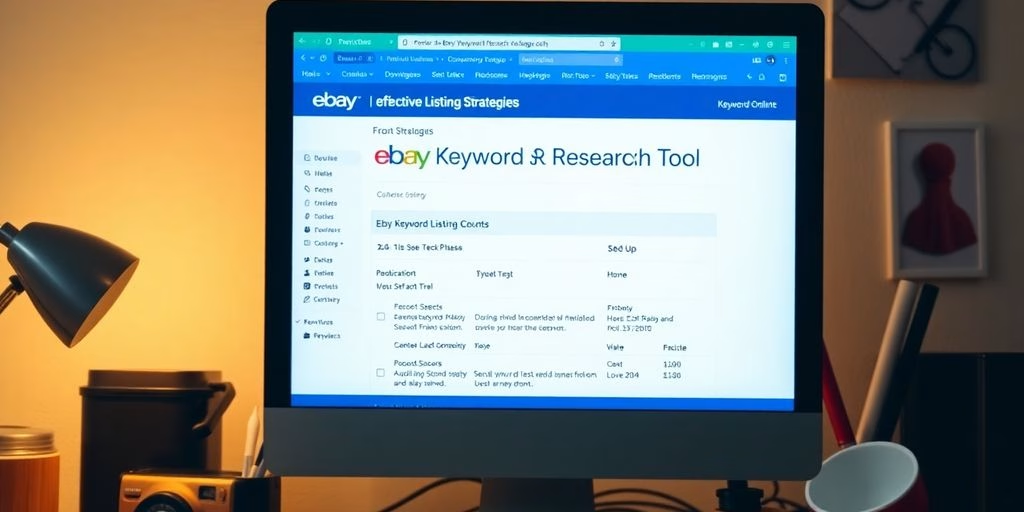The digital seas are ever-changing, and with those changes come the need to guide visitors to new destinations on your website. The 301 redirect serves as the lighthouse, ensuring that both users and search engines find their way to your new content without getting lost in the transition. This guide will explore the essentials of 301 redirects, their significance for SEO, and how to effectively navigate the waters of website changes.
Key Takeaways on 301 Redirects
- 301 redirects are the internet’s forwarding mechanism, crucial for directing traffic to new URLs and maintaining SEO rankings during website changes.
- Proper use of 301 redirects is essential for a seamless user experience and to avoid disruptions during site rebranding, domain changes, or content updates.
- It’s important to differentiate between 301 and 302 redirects, as they communicate permanent and temporary moves to search engines respectively.
- Creating a detailed redirect map is a fundamental step in the process, ensuring that all old URLs are accounted for and appropriately pointed to their new locations.
- Measuring the impact of 301 redirects through tools like CloudFlare can help in troubleshooting issues and confirming the success of the transition.
Steering Through 301 Redirects

The Anatomy of a 301 Redirect
At the heart of any website evolution lies the humble yet mighty 301 redirect, a digital compass that ensures no visitor is left behind. Think of it as the internet’s forwarding address; a way to tell browsers and search engines, “Ahoy! We’ve set sail to new coordinates!” This HTTP status code is the beacon that guides users from an old URL to the new URL, seamlessly maintaining the flow of traffic.
- A 301 redirect is a permanent change of address for a webpage.
- It passes significant ranking power to the new destination.
- It’s essential for preserving SEO value during site migrations.
A 301 redirect is not just a change of address notice; it’s a powerful SEO lifesaver that keeps your digital ship afloat in the vast ocean of the internet.
By implementing a 301 redirect, you’re not just rerouting traffic; you’re also sending a clear signal to search engines that your page has a new permanent home. This is crucial for ecommerce stores, as it prevents customers from docking at an empty harbor when they’re looking to trade. For WordPress captains, a 301 redirect is the permanent marker on the map, pointing both Google bots and site visitors to the new treasure trove of content.
Why 301 Redirects Are Your SEO Lifesavers
Think of a 301 redirect as the digital equivalent of a forwarding address for your website. When you move a page to a new URL, you don’t want to leave behind the SEO juice that’s been brewing over time. A 301 redirect ensures that the search engines and your users can follow the trail to your new digital abode without getting lost. It’s like having a trusty old compass; it always points to true north, or in this case, your content’s new location.
301 redirects are not just about maintaining a seamless user experience; they’re about preserving the hard-earned SEO value of your pages. Here’s why they’re indispensable:
- They signal to search engines that your page has a new permanent address, maintaining your site’s credibility.
- They transfer the link equity from the old URL to the new one, keeping your page rank afloat.
- They prevent the dreaded 404 errors that can sink user satisfaction and SEO rankings.
By effectively implementing a 301 redirect, you’re ensuring that your site’s legacy and authority sail smoothly into new waters.
Charting the Course: When to Implement a 301
Navigating the digital landscape requires a keen understanding of when to set sail with a 301 redirect. It’s the beacon that guides search engines and users to your content’s new home. When your website undergoes significant changes, like a rebranding or a URL overhaul, a 301 redirect ensures that your SEO efforts and user experience remain shipshape.
- Website Rebranding or Renaming: A new identity on the horizon? Make sure your audience and search engines can find you.
- Content Relocation: If you’re moving content to a new URL, a 301 redirect is the compass that points to the treasure.
- Merging Websites: When two become one, use a 301 to combine the SEO power of both sites.
Remember, a 301 redirect is not just a signal—it’s a commitment to a new course. Use it wisely to maintain the integrity of your site’s SEO value and to keep your digital footprint robust.
Mapping Your Website’s New Horizons

Creating a Redirect Map: The Cartographer’s Guide
Embarking on the journey of website migration is akin to setting sail on the vast digital ocean. Charting your path with a redirect map is not just about avoiding the treacherous waters of broken links; it’s about ensuring a seamless voyage for your users and search engines alike. Here’s how to set your compass:
- Identify the Old URL: Like finding the starting point on a treasure map, pinpoint the original URLs that need redirection.
- Map the New Destination: Determine the new URLs that will replace the old ones, ensuring they lead to relevant, updated content.
Remember, a well-crafted redirect map is the cornerstone of a successful site migration, guiding visitors and search crawlers to their intended destination without a hitch.
Once your map is drawn, it’s time to populate the “Redirect To” column in your document. Open up a list of all planned URLs on your new website and begin the meticulous process of pairing them with their former counterparts. This step is crucial for maintaining the integrity of your site’s structure and SEO ranking.
Ensuring a Smooth User Voyage
To keep your digital ship afloat and your crew content, steering clear of user frustration is paramount. A smooth transition during website changes is like the calm seas for sailors; it’s essential for maintaining user trust and conversion rates. Here are a few navigational tips to ensure a seamless user journey:
- Preserve user preferences: like a trusty compass, remember the settings your users prefer. If they’ve chosen dark mode, make sure that choice follows them like a loyal parrot on their shoulder.
- Simplify your navigation menus: a cluttered deck leads to confusion. Keep your menus as clean as the captain’s quarters.
- Maintain a consistent site architecture: changing the layout of your ship too drastically can leave even the most seasoned sailors lost at sea.
By actively monitoring and adjusting, we uphold our site’s integrity post-migration.
Remember, the goal is to move forward without leaving your users marooned on a deserted island of confusion. By adhering to these best practices, you can ensure that your website remains a beacon of familiarity in the vast ocean of the internet.
Updating Domain Registrations
Ahoy! Updating domain registrations is the final treasure map to your new digital island. It’s not just about hoisting a new flag; it’s about making sure every sailor knows where to dock. Ensure your domain’s registry is as up-to-date as a ship’s logbook after a long voyage. Here’s how to navigate these waters:
- Domain Registrar: Engage with your domain registrar to update registration records. This is your first port of call.
- Registrar Transfer: Consider transferring the domain to a new registrar if they offer superior navigational tools or services.
Remember, matey, a ship is only as good as its crew. Similarly, a domain is only as good as its registration details. Keep them current to avoid sailing into the doldrums of outdated information.
By approaching these technical aspects methodically, we ensure a smooth transition to the new domain.
And don’t forget, changing your domain’s A Record and Nameservers is like setting a new course for your ship. Make sure they point to the new server’s IP address and that your server is ready to handle the expected traffic without capsizing. Lastly, update your hosting and CMS settings, and if you’re sending messages in bottles (or emails), configure your system within the new domain to keep the communication lines open.
Preparing for Website Rebranding

Maintaining SEO Integrity During a Rebrand
When your website undergoes a rebrand, it’s like setting sail on uncharted waters. Maintaining SEO integrity is akin to keeping your ship’s hull intact; it’s essential for the journey ahead. Here’s how to keep your SEO treasure from sinking to the depths:
- Map out your current SEO landscape: Before you hoist the sails, chart your existing SEO territory. This includes noting your site’s URL structure, meta titles, and descriptions. These are the stars by which you’ll navigate, ensuring you don’t lose your way.
- Adopt a progressive redesign: Instead of capsizing your site with a complete overhaul, consider a progressive approach. This allows you to gradually introduce changes, minimizing the risk of SEO shipwrecks.
- Steer clear of internal turmoil: As you change your domain’s flag, make sure to update internal links. Consistency in content and structure is the compass that guides search engines and users alike.
During the migration phase, steps are taken to preserve SEO value, such as setting up proper redirects, updating internal links, and notifying search engines of the change.
Remember, rebranding isn’t just about a new coat of paint; it’s about ensuring that your digital presence remains strong and visible, like a lighthouse guiding ships home. Keep a vigilant eye on your SEO practices to ensure that your new brand identity solidifies your position in the vast ocean of search.
The Permanence of 301: Solidifying Your New Identity
In the grand tapestry of the web, a 301 redirect is akin to a masterful stitch that seamlessly connects the old with the new. It’s the digital equivalent of a sea captain changing the ship’s flag while ensuring the vessel’s legacy sails on. By implementing a 301 redirect during a rebrand, you’re not just slapping on a new coat of paint; you’re preserving the authority and trust you’ve built over time.
- A 301 redirect is a declaration of permanence, a commitment to a new course.
- It’s a signal to search engines that your content’s value and history are now anchored to a new URL.
- This steadfast redirection is essential for maintaining the SEO prowess that your old domain wielded.
With a 301 redirect, you’re not erasing history; you’re writing a new chapter with the same pen, just on a fresher page.
Remember, while the URL may change, the destination’s essence remains. The 301 redirect ensures that your voyage through the digital seas is not a drift into obscurity but a charted journey towards continued relevance and recognition.
Sailing the Digital Seas: Transitioning Your Online Presence
As you embark on the journey of rebranding, it’s crucial to navigate the digital seas with precision. Your online presence is the flagship of your brand, and steering it through the waters of change requires a keen eye and a steady hand. Here’s how to ensure your voyage is successful:
- Refresh Content Strategy: Reassess your content strategy to align it with your new brand identity and goals. Determine the types of content that resonate with your audience and chart a course for engagement.
- Audit Online Presence: Take stock of all your digital assets. Ensure that your graphics are up-to-date and that your social media profiles reflect your new brand.
- Define the Messaging: Your brand’s voice should echo across all platforms consistently. Craft messaging that embodies your new identity and speaks directly to your audience.
By meticulously planning our domain migration, we ensure that user experience and branding remain consistent and unmistakably ours.
Remember, a successful transition isn’t just about redirecting URLs; it’s about reassuring your audience that while the scenery may change, the essence of your brand remains true to course. Set sail with confidence, knowing that your digital presence will emerge from this rebranding stronger and more cohesive than ever.
Temporary Ports of Call: Navigating 301 vs 302 Redirects

Deciphering the Signals: When to Use Each Redirect
In the grand voyage of web navigation, knowing when to set sail with a 301 or a 302 redirect is akin to choosing the right wind for your journey. A 301 redirect is the seasoned captain, confidently declaring a permanent change of course. It’s the go-to when your content has walked the plank and moved to a new digital island, ensuring that the SEO treasure you’ve amassed over the years follows you. On the other hand, a 302 redirect is like a savvy first mate, perfect for temporary excursions when you plan to return to familiar shores.
A 301 redirect is a permanent redirect, indicating that the original URL has been permanently moved to a new location. It’s used when you want to pass on the SEO redirects.
Here’s a quick chart to help you navigate these waters:
- Use a 301 redirect when you’re rebranding or renaming your website, and the change is as permanent as the North Star.
- Opt for a 302 redirect for seasonal promotions or when testing new waters with A/B testing, ensuring you can hoist the sails back to the original content when the time is right.
Redirecting with Purpose
As the digital tides turn with the seasons, your website might need to don a festive hat or a summer lei. Seasonal promotions and events call for a temporary reshuffling of your online deck. A 302 redirect is your trusty first mate in these scenarios, ensuring that your SEO value remains anchored while you sail through temporary waters.
- A/B testing different versions of a page
- Undergoing website maintenance
- Seasonal promotions or events
Choosing the right type of redirect—301 for permanent changes and 302 for those just passing through—is akin to picking the right sails for the journey. A 302 redirect is a temporary redirect, indicating that a resource has been temporarily moved to a different location. It’s the perfect solution for when you’re 99.9% sure that the old page will be restored after a short period.
While a 302 redirect does not pass link equity in the same way a 301 does, it’s useful for temporary situations, ensuring that the SEO value of the original page is preserved until the content or promotion ends.
SEO Considerations for Temporary Changes
When the digital seas are calm, a well-placed 301 redirect can be a beacon of stability, guiding the SEO value from an old URL to its new destination. But beware the siren’s call of misusing a 301 for temporary changes—this can lead to a murky abyss where search engines cling to the old path, long after the tides have shifted back.
- Use 302 Redirects for Temporary Moves: A 302 redirect is the maritime flag that signals a temporary relocation. It ensures that search engines understand the original URL will soon hoist its sails once more.
- Avoid Chains of Redirects: Like avoiding a treacherous string of rocky islets, steer clear of redirect chains to prevent slowing down your site’s voyage and confusing the search engines.
In the vast ocean of the web, the right redirect is the compass that keeps your site’s course true and your SEO treasure intact.
Remember, while a 301 redirect transfers the popularity and SEO authority of the old URL, a 302 redirect is used to signify a temporary change. Chart your course wisely, and you’ll keep the lighthouse visible, ensuring that both users and search engines can navigate your content with ease.
Implementing 301 Redirects with CloudFlare

The CloudFlare Compass: Setting Up Permanent Redirects
Alright, let’s dive into the nitty-gritty of setting up 301 redirects with CloudFlare, but let’s keep it light and breezy. Think of a 301 redirect as the internet’s way of forwarding mail from your old address to your new one. You’ve moved houses (or in this case, web pages), and you don’t want to lose any of those precious letters (visitors or SEO juice).
To ensure not a single SEO postcard goes astray, follow these steps:
- Head over to the Page Rules section in your CloudFlare dashboard.
- Click to create a new rule, then type in the pattern of the URL you’re saying goodbye to. If we’re moving from
oldsite.comtonewsite.com, it’ll look something like*oldsite.com/*. Those asterisks are wildcards; they catch everything like a baseball mitt. - In Pick a Setting, choose Forwarding URL from the drop-down menu. For Select status code, choose 301 – Permanent Redirect. Enter the destination URL where you want your traffic to land.
Remember, by getting familiar with DNS settings and playing around with Page Rules, managing site evolution becomes less of an uphill battle and more like guiding ships smoothly into port. Use Bulk redirects to forward traffic from your alias domain to your other domain, ensuring you cover your entire alias with subpath matching.
Troubleshooting Common Issues
Even the most seasoned sailors of the digital seas can find themselves adrift when a 301 Redirect goes awry. Fear not, for troubleshooting is but a compass to guide you back on course. Here’s a lifeline to cling to when the waters get choppy:
- Check your DNS settings: A common misstep is a redirect pointing to the wrong URL. Ensure your domain’s nameservers are correctly set to CloudFlare’s.
- Review your Page Rules: Like a map that’s slightly off, incorrect Page Rules can lead you astray. Verify that your patterns are specific and the rules are in the right order.
- Domain Registrar Sync: Sometimes the issue lies with the domain registrar. If you’ve updated your domain at GoDaddy or transferred it to CloudFlare, give it time to propagate.
Remember, patience is a virtue at sea and in cyberspace. Changes may take time to reflect.
If you’re still navigating through foggy issues, consider the community’s experiences. For instance, some users have found that certain registrars like name.com may have more complexities with redirects. In such cases, transferring your domain to CloudFlare could be a beacon of hope. By staying vigilant and methodical, you’ll weather the storm and sail into smoother digital waters.
Charting Success: Measuring the Impact of Your 301 Redirects
Once you’ve set sail with your 301 redirects, it’s time to navigate the results. Tracking the performance of these redirects is not just about confirming they work; it’s about understanding their impact on your website’s voyage through the vast ocean of the internet. To evaluate the effectiveness, focus on metrics like Click-Through Rate (CTR), Bounce Rate, and Conversion Rate post-redirection. These metrics are your compass, guiding you towards successful SEO shores.
Keep a vigilant watch on your website’s performance, organic traffic, and search engine rankings after implementing 301 redirects. Monitor for any issues or drops in traffic and adjust your course as needed.
Ensuring that redirects are implemented correctly at the server level is crucial. Use server-side redirects, such as .htaccess for Apache servers or web.config for IIS servers, rather than relying on client-side methods like JavaScript redirects. Here’s a quick checklist to keep your ship on course:
- Verify redirects with an HTTP status code checker
- Monitor rankings and traffic in analytics tools like Google Analytics
- Use SEO tools to track and report on the status of your redirects
Remember, a smooth transition is paramount for maintaining the SEO equity from old URLs to new ones. By keeping an eye on the essential metrics and adjusting your sails accordingly, you can ensure that your digital journey continues without losing the wind in your SEO sails.
Navigating the digital seas can be complex, but with ‘All Hands on Deck: Implementing 301 Redirects with CloudFlare’, we make it smooth sailing. Ensure your website’s transition is seamless and your SEO stays on course. Contact us now for a comprehensive guide and expert assistance. Let’s chart the course to your online success together!
Conclusions
And there you have it, web wanderers and digital nomads! We’ve journeyed through the labyrinth of 301 redirects, uncovering their secrets and learning how they serve as the internet’s trusty compass, always pointing your audience in the right direction. Remember, a well-implemented 301 redirect is like a savvy tour guide for your website’s visitors, ensuring they can enjoy the sights of your content without getting lost in the dreaded 404 wilderness.
So, whether you’re moving digital homes, sprucing up your site’s architecture, or simply ensuring your SEO doesn’t take a nosedive, the 301 redirect is your go-to tool for smooth sailing on the cyber seas. Keep this guide handy, and you’ll be the captain of website changes, steering your online presence towards the horizon of success with confidence and ease!
FAQs
What is a 301 redirect and why is it important?
A 301 redirect is the internet’s forwarding address for your website, vital for guiding visitors to your new URL without a hitch. It maintains your search engine rankings robust by informing search engines that your site’s content has permanently moved to a new URL.
When should I use a 301 redirect?
You should use a 301 redirect when making permanent changes to your website’s structure, such as changing domain names, migrating to a new website, or consolidating pages. It’s essential for transferring SEO value from the old URL to the new one.
How does a 301 redirect affect my website’s SEO?
A 301 redirect helps preserve your site’s SEO rankings by signaling to search engines that the page has moved permanently. This ensures that the link equity and historical search rankings are transferred to the new URL.
What is the difference between a 301 and a 302 redirect?
A 301 redirect is used for permanent URL changes and is crucial for maintaining SEO rankings. A 302 redirect is used for temporary changes, like A/B testing or maintenance, and does not transfer SEO value permanently.
How do I create a redirect map for my website?
Creating a redirect map involves carefully mapping old URLs to their corresponding new ones before migration. This is a crucial step to ensure a smooth transition for both users and search engines.
Is it necessary to update domain registrations after implementing 301 redirects?
Yes, updating domain registrations is crucial to reflect the new ownership and hosting details. It ensures that the domain’s administrative and technical information is accurate and up-to-date.

![A Comprehensive Guide to Google Play Console Pricing [n8n]](https://cworks.id/wp-content/uploads/2025/09/cover-image-24622.avif)
![Understanding the Google Play Console Price: What Developers Need to Know [arvow]](https://cworks.id/wp-content/uploads/2025/05/4755037cthumbnail.avif)






































































































